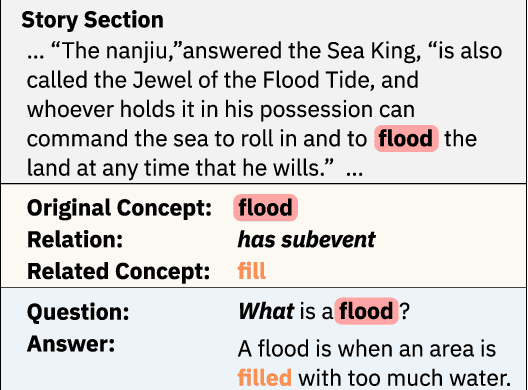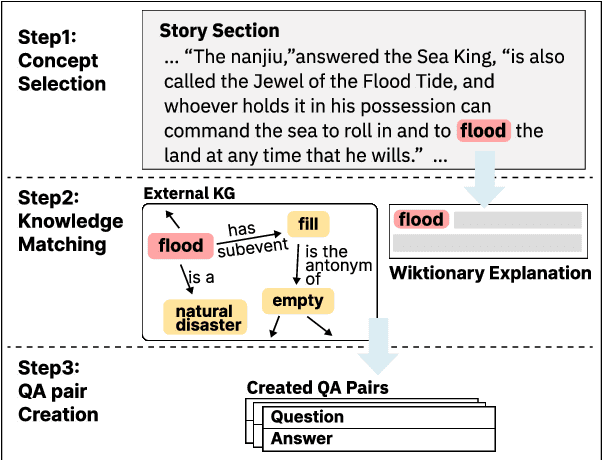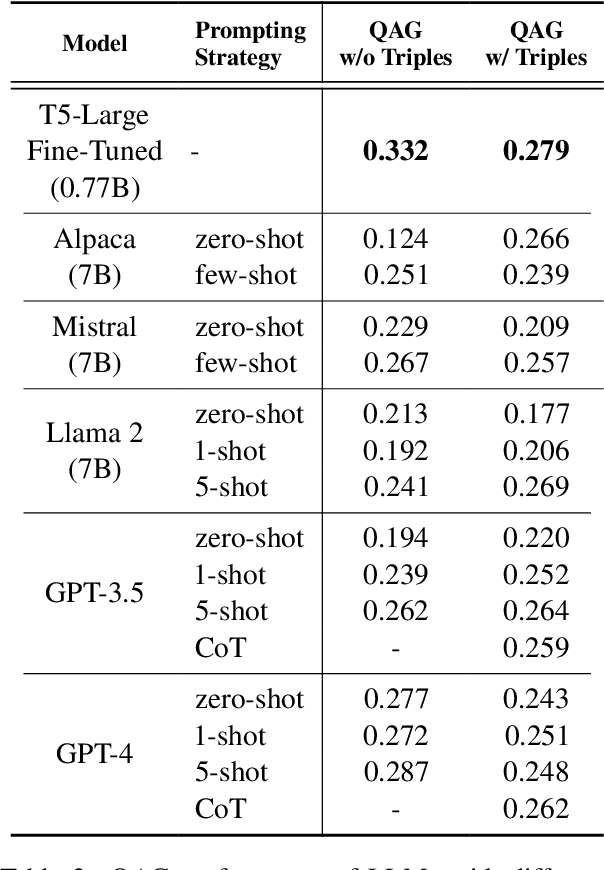Yuxuan Lu
AgentA/B: Automated and Scalable Web A/BTesting with Interactive LLM Agents
Apr 13, 2025Abstract:A/B testing experiment is a widely adopted method for evaluating UI/UX design decisions in modern web applications. Yet, traditional A/B testing remains constrained by its dependence on the large-scale and live traffic of human participants, and the long time of waiting for the testing result. Through formative interviews with six experienced industry practitioners, we identified critical bottlenecks in current A/B testing workflows. In response, we present AgentA/B, a novel system that leverages Large Language Model-based autonomous agents (LLM Agents) to automatically simulate user interaction behaviors with real webpages. AgentA/B enables scalable deployment of LLM agents with diverse personas, each capable of navigating the dynamic webpage and interactively executing multi-step interactions like search, clicking, filtering, and purchasing. In a demonstrative controlled experiment, we employ AgentA/B to simulate a between-subject A/B testing with 1,000 LLM agents Amazon.com, and compare agent behaviors with real human shopping behaviors at a scale. Our findings suggest AgentA/B can emulate human-like behavior patterns.
UXAgent: A System for Simulating Usability Testing of Web Design with LLM Agents
Apr 13, 2025Abstract:Usability testing is a fundamental research method that user experience (UX) researchers use to evaluate and iterate a web design, but\textbf{ how to evaluate and iterate the usability testing study design } itself? Recent advances in Large Language Model-simulated Agent (\textbf{LLM Agent}) research inspired us to design \textbf{UXAgent} to support UX researchers in evaluating and reiterating their usability testing study design before they conduct the real human-subject study. Our system features a Persona Generator module, an LLM Agent module, and a Universal Browser Connector module to automatically generate thousands of simulated users to interactively test the target website. The system also provides an Agent Interview Interface and a Video Replay Interface so that the UX researchers can easily review and analyze the generated qualitative and quantitative log data. Through a heuristic evaluation, five UX researcher participants praised the innovation of our system but also expressed concerns about the future of LLM Agent usage in UX studies.
Beyond Believability: Accurate Human Behavior Simulation with Fine-Tuned LLMs
Mar 27, 2025Abstract:Recent research shows that LLMs can simulate ``believable'' human behaviors to power LLM agents via prompt-only methods. In this work, we focus on evaluating and improving LLM's objective ``accuracy'' rather than the subjective ``believability'' in the web action generation task, leveraging a large-scale, real-world dataset collected from online shopping human actions. We present the first comprehensive quantitative evaluation of state-of-the-art LLMs (e.g., DeepSeek-R1, Llama, and Claude) on the task of web action generation. Our results show that fine-tuning LLMs on real-world behavioral data substantially improves their ability to generate actions compared to prompt-only methods. Furthermore, incorporating synthesized reasoning traces into model training leads to additional performance gains, demonstrating the value of explicit rationale in behavior modeling. This work establishes a new benchmark for evaluating LLMs in behavior simulation and offers actionable insights into how real-world action data and reasoning augmentation can enhance the fidelity of LLM agents.
UXAgent: An LLM Agent-Based Usability Testing Framework for Web Design
Feb 18, 2025



Abstract:Usability testing is a fundamental yet challenging (e.g., inflexible to iterate the study design flaws and hard to recruit study participants) research method for user experience (UX) researchers to evaluate a web design. Recent advances in Large Language Model-simulated Agent (LLM-Agent) research inspired us to design UXAgent to support UX researchers in evaluating and reiterating their usability testing study design before they conduct the real human subject study. Our system features an LLM-Agent module and a universal browser connector module so that UX researchers can automatically generate thousands of simulated users to test the target website. The results are shown in qualitative (e.g., interviewing how an agent thinks ), quantitative (e.g., # of actions), and video recording formats for UX researchers to analyze. Through a heuristic user evaluation with five UX researchers, participants praised the innovation of our system but also expressed concerns about the future of LLM Agent-assisted UX study.
RECOVER: Designing a Large Language Model-based Remote Patient Monitoring System for Postoperative Gastrointestinal Cancer Care
Feb 09, 2025Abstract:Cancer surgery is a key treatment for gastrointestinal (GI) cancers, a group of cancers that account for more than 35% of cancer-related deaths worldwide, but postoperative complications are unpredictable and can be life-threatening. In this paper, we investigate how recent advancements in large language models (LLMs) can benefit remote patient monitoring (RPM) systems through clinical integration by designing RECOVER, an LLM-powered RPM system for postoperative GI cancer care. To closely engage stakeholders in the design process, we first conducted seven participatory design sessions with five clinical staff and interviewed five cancer patients to derive six major design strategies for integrating clinical guidelines and information needs into LLM-based RPM systems. We then designed and implemented RECOVER, which features an LLM-powered conversational agent for cancer patients and an interactive dashboard for clinical staff to enable efficient postoperative RPM. Finally, we used RECOVER as a pilot system to assess the implementation of our design strategies with four clinical staff and five patients, providing design implications by identifying crucial design elements, offering insights on responsible AI, and outlining opportunities for future LLM-powered RPM systems.
Benchmarking LLMs' Judgments with No Gold Standard
Nov 11, 2024Abstract:We introduce the GEM (Generative Estimator for Mutual Information), an evaluation metric for assessing language generation by Large Language Models (LLMs), particularly in generating informative judgments, without the need for a gold standard reference. GEM broadens the scenarios where we can benchmark LLM generation performance-from traditional ones, like machine translation and summarization, where gold standard references are readily available, to subjective tasks without clear gold standards, such as academic peer review. GEM uses a generative model to estimate mutual information between candidate and reference responses, without requiring the reference to be a gold standard. In experiments on a human-annotated dataset, GEM demonstrates competitive correlations with human scores compared to the state-of-the-art GPT-4o Examiner, and outperforms all other baselines. Additionally, GEM is more robust against strategic manipulations, such as rephrasing or elongation, which can artificially inflate scores under a GPT-4o Examiner. We also present GRE-bench (Generating Review Evaluation Benchmark) which evaluates LLMs based on how well they can generate high-quality peer reviews for academic research papers. Because GRE-bench is based upon GEM, it inherits its robustness properties. Additionally, GRE-bench circumvents data contamination problems (or data leakage) by using the continuous influx of new open-access research papers and peer reviews each year. We show GRE-bench results of various popular LLMs on their peer review capabilities using the ICLR2023 dataset.
VoxelTrack: Exploring Voxel Representation for 3D Point Cloud Object Tracking
Aug 05, 2024Abstract:Current LiDAR point cloud-based 3D single object tracking (SOT) methods typically rely on point-based representation network. Despite demonstrated success, such networks suffer from some fundamental problems: 1) It contains pooling operation to cope with inherently disordered point clouds, hindering the capture of 3D spatial information that is useful for tracking, a regression task. 2) The adopted set abstraction operation hardly handles density-inconsistent point clouds, also preventing 3D spatial information from being modeled. To solve these problems, we introduce a novel tracking framework, termed VoxelTrack. By voxelizing inherently disordered point clouds into 3D voxels and extracting their features via sparse convolution blocks, VoxelTrack effectively models precise and robust 3D spatial information, thereby guiding accurate position prediction for tracked objects. Moreover, VoxelTrack incorporates a dual-stream encoder with cross-iterative feature fusion module to further explore fine-grained 3D spatial information for tracking. Benefiting from accurate 3D spatial information being modeled, our VoxelTrack simplifies tracking pipeline with a single regression loss. Extensive experiments are conducted on three widely-adopted datasets including KITTI, NuScenes and Waymo Open Dataset. The experimental results confirm that VoxelTrack achieves state-of-the-art performance (88.3%, 71.4% and 63.6% mean precision on the three datasets, respectively), and outperforms the existing trackers with a real-time speed of 36 Fps on a single TITAN RTX GPU. The source code and model will be released.
Eliciting Informative Text Evaluations with Large Language Models
May 28, 2024Abstract:Peer prediction mechanisms motivate high-quality feedback with provable guarantees. However, current methods only apply to rather simple reports, like multiple-choice or scalar numbers. We aim to broaden these techniques to the larger domain of text-based reports, drawing on the recent developments in large language models. This vastly increases the applicability of peer prediction mechanisms as textual feedback is the norm in a large variety of feedback channels: peer reviews, e-commerce customer reviews, and comments on social media. We introduce two mechanisms, the Generative Peer Prediction Mechanism (GPPM) and the Generative Synopsis Peer Prediction Mechanism (GSPPM). These mechanisms utilize LLMs as predictors, mapping from one agent's report to a prediction of her peer's report. Theoretically, we show that when the LLM prediction is sufficiently accurate, our mechanisms can incentivize high effort and truth-telling as an (approximate) Bayesian Nash equilibrium. Empirically, we confirm the efficacy of our mechanisms through experiments conducted on two real datasets: the Yelp review dataset and the ICLR OpenReview dataset. We highlight the results that on the ICLR dataset, our mechanisms can differentiate three quality levels -- human-written reviews, GPT-4-generated reviews, and GPT-3.5-generated reviews in terms of expected scores. Additionally, GSPPM penalizes LLM-generated reviews more effectively than GPPM.
Professional Network Matters: Connections Empower Person-Job Fit
Dec 19, 2023Abstract:Online recruitment platforms typically employ Person-Job Fit models in the core service that automatically match suitable job seekers with appropriate job positions. While existing works leverage historical or contextual information, they often disregard a crucial aspect: job seekers' social relationships in professional networks. This paper emphasizes the importance of incorporating professional networks into the Person-Job Fit model. Our innovative approach consists of two stages: (1) defining a Workplace Heterogeneous Information Network (WHIN) to capture heterogeneous knowledge, including professional connections and pre-training representations of various entities using a heterogeneous graph neural network; (2) designing a Contextual Social Attention Graph Neural Network (CSAGNN) that supplements users' missing information with professional connections' contextual information. We introduce a job-specific attention mechanism in CSAGNN to handle noisy professional networks, leveraging pre-trained entity representations from WHIN. We demonstrate the effectiveness of our approach through experimental evaluations conducted across three real-world recruitment datasets from LinkedIn, showing superior performance compared to baseline models.
FairytaleCQA: Integrating a Commonsense Knowledge Graph into Children's Storybook Narratives
Nov 16, 2023



Abstract:AI models (including LLM) often rely on narrative question-answering (QA) datasets to provide customized QA functionalities to support downstream children education applications; however, existing datasets only include QA pairs that are grounded within the given storybook content, but children can learn more when teachers refer the storybook content to real-world knowledge (e.g., commonsense knowledge). We introduce the FairytaleCQA dataset, which is annotated by children education experts, to supplement 278 storybook narratives with educationally appropriate commonsense knowledge. The dataset has 5,868 QA pairs that not only originate from the storybook narrative but also contain the commonsense knowledge grounded by an external knowledge graph (i.e., ConceptNet). A follow-up experiment shows that a smaller model (T5-large) fine-tuned with FairytaleCQA reliably outperforms much larger prompt-engineered LLM (e.g., GPT-4) in this new QA-pair generation task (QAG). This result suggests that: 1) our dataset brings novel challenges to existing LLMs, and 2) human experts' data annotation are still critical as they have much nuanced knowledge that LLMs do not know in the children educational domain.
 Add to Chrome
Add to Chrome Add to Firefox
Add to Firefox Add to Edge
Add to Edge